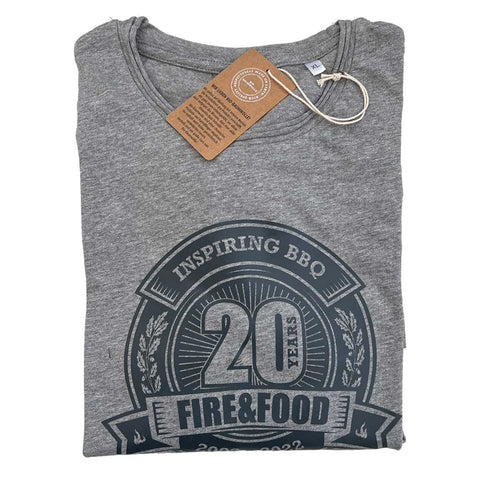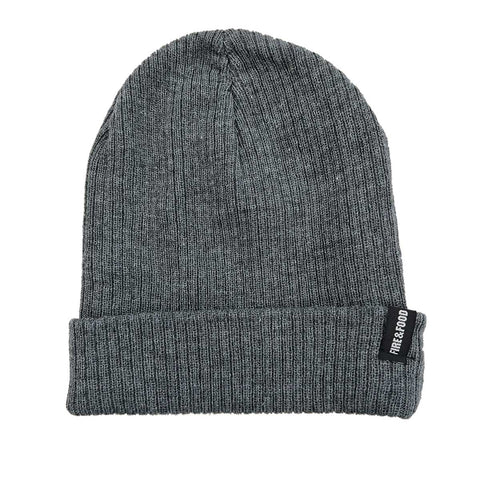Smoke in the “water barrel”: Water and bullet smokers
Above: A water smoker in action. It is a rather simple grill without any great technical finesse. This model has two levels (stacker)
Below: The water bowl is the heart of the smoker. It sits above the embers and ensures the right temperature and climate in the cooking chamber
Classic smokers often have one or two disadvantages for home use. Size, weight, price and fuel consumption immediately come to mind. And anyone who has ever operated such a device themselves has a few more reasons to describe using such a "locomotive" as at least not entirely easy. But what is the alternative? A ceramic grill? It works great, also weighs a lot and offers less capacity. And even "cheap" kamados are not bargains. But what then? The answer: a water or bullet smoker.
The principle
The water smoker, as it is called – in a semi-German way – is basically a very simple device. It is based on the barrel or ugly drum smoker, which are usually homemade. In contrast, water smokers are shaped like a kettle grill on the top and bottom; the "barrel" is practically in between. Because they resemble a bullet, they are also called bullet smokers. In contrast to a decent offset smoker, the wall thickness of the water smoker is very small; they correspond to those of a good kettle grill. In contrast to this, the upright smoker grill has a little secret, although apart from the intermediate pieces (stackers) it looks like a kettle grill: Above the charcoal basket/coal grate sits a water bowl, which is only a few centimeters smaller in diameter than the outer shell. Now it becomes clear where this grill got its name from.
This water bowl has several functions. As long as it is full, it serves as a heat deflector. It decouples the food lying above it from the glowing coals. At the same time, the water stores the heat. This means that the water smoker runs much more stably than a kettle grill. Ultimately, it has more mass, at least temporarily. And the water does something else: by evaporating, it creates a humid climate in the grill. This is generally beneficial to the result. Meat stays a little juicier because less liquid has to evaporate from the food to saturate the air in the cooking chamber.
Typical examples of this type of grill are the Rösle Smoker No. 1, the Frontier and Excel models from ProQ, the almost identical Apollos from Napoleon and the Smokey Mountain Cooker from Weber. There are also a number of very cheap models that are often very difficult to regulate because they constantly take in too much air. If you interpret the term "water smoker" generously, you can also include gas smokers in this category because their construction is very similar.
Operation
In theory, the principle of the water smoker sounds pretty ingenious and under ideal conditions it is. But it has its limits. If the barrel is standing in the rain or exposed to wind, the heat storage capacity is not enough to compensate for the heat loss over the relatively large surface area. Then more fire has to be used. More on that later. Basically, the grill is operated in the same way as you would prepare a bowl for long jobs, ideally with a minion ring. The water bowl is filled and placed over the embers; it takes a while for the smoker to reach temperature. But you should definitely start smoking in that time. Once the grill has reached the desired temperature, the air supply control at the bottom of the bowl adjusts the combustion so that there are no major fluctuations. In contrast to the bowl, water smokers often have two or three air inlets.
It is advisable to open and close them all at the same time. This will get the air inside moving a little more. The lid vents should only be opened to the extent that the smoker develops enough draft to keep the combustion going. A thermometer is useful here, which can also be used to control the cooking chamber temperature wirelessly if you don't want to run to the grill regularly. If the temperature drops dramatically, this is a sign that the coal is running low. At this point at the latest, you should "attach" the Minion ring again. If it starts to rain or a strong wind comes up, turn the air supply up a little more as a preventative measure, but not on the windward side at first. It is better, however, to put the barrel in a sheltered place - if possible.
Such a smoker is ideally fired with a Minion ring. This ensures a corresponding burning time at moderate heat
Many water smokers have several air inlets in the area of the coal bowl. Ideally, you regulate them all evenly
Models with multiple stackers can be used modularly depending on the amount of food to be grilled. If necessary, they can also be used as a kettle grill
Tuning tricks
Due to its simple design, a water smoker does not offer many options for optimization. But there are tricks. One example is using sand instead of water in the bowl. The sand is covered with aluminum foil so that it is not soaked with fat after the first use. A bowl of water is also placed on top of the foil. The advantage of this solution is that the temperature storage remains unchanged throughout the entire cooking process; the sand obviously does not evaporate. Sand is ideal because it has a poorer heat capacity than water, which prevents the bowl from eventually heating up to the temperature of the coals underneath.
Another, albeit not entirely inexpensive, option for optimization is to use an electronically controlled fan such as the BBQ Guru. Such a device makes temperature control easier and makes handling more comfortable. With the water smokers from Rösle, Napoleon and ProQ, it is also possible to reduce the size if you can get by with one grill level. To do this, simply leave out one of the two stackers. The Smokey Mountain Cooker from Weber does not offer this option; it only has an intermediate element.
If the bowl is filled with sand instead of water, the mass and thus the heat capacity remains unchanged. This offers a little more comfort
The rod in the lid offers the possibility to hang smoked goods such as ham or sausages.
Conclusion
The water smoker is a very sensible purchase for anyone who likes to grill low & slow but doesn't have the space for a smoker or is afraid of making a large investment. It also offers a practical additional function, at least in autumn and winter: with a fuel burner in the charcoal basket and without a water bowl, it can also be used for cold smoking. Many models even have a special rod in the lid for hanging ham, sausages or fish.
Author: Markus Mizgalski





















